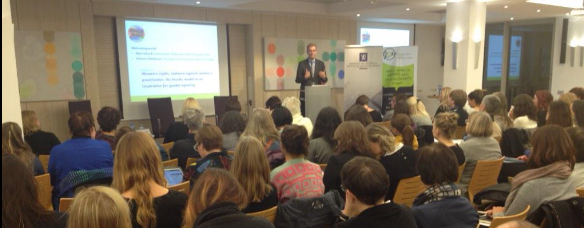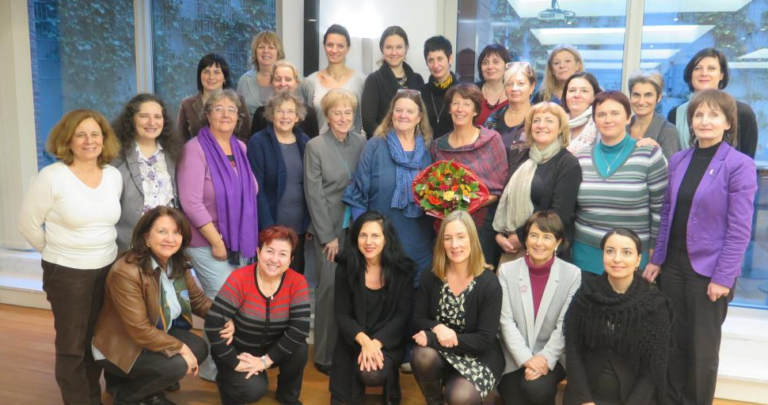The EU needs binding legislation to crack down on violence against women, argues Rada Boric, a member of the EWL Executive Committee.
On 8 March 2011, the people of Europe and the world celebrate the 100th international women’s day. On this occasion, the EU also marks one year since the adoption of council conclusions calling on the European commission to develop a comprehensive strategy to tackle widespread violence against women. For the European Women’s Lobby (EWL) and its members across Europe, it was a hard blow that the celebrations of a centenary of hard work and concrete achievements should be overshadowed by fears that one of the most important EU initiatives of the new millennium is being quietly sidelined by the commission, and that women are to continue to be denied one of their most basic of human rights, that to protection from violence. Violence against women affects approximately 45 per cent of all women across Europe. An estimated fifth of women in the EU suffer from violence within the home and more than one in 10 women is a victim of sexual violence involving the use of force. In the UK, 80,000 women experience rape or attempted rape per year, in Ireland, one in five women is raped in marriage and in France, one woman is killed every three days by her partner. As the 2006 Daphne project on the cost of domestic violence in Europe shows, domestic violence alone costs EU member states as much as €16bn every year – or €1m every half hour. The project also highlights that the annual budgets of EU member states for prevention programmes of violence against women are 1000 times less than this figure. This is despite consistent Eurobarometer survey results highlighting widespread concern for the prevalence and scope of violence against women, including within the family. Violence against women is a political issue, both the cause and consequence of gender inequality. In addition to the direct impacts on individuals and the aggregate social costs, male violence against women shapes women’s place in society. It affects their access to employment and education, integration into social and cultural activities, economic independence, participation in public and political life and decision making, health and relations with men. At the same time, inequality between women and men creates the conditions for male violence against women and legitimises it. To date, the EU has no binding legislation in place to deal with this most pervasive human rights abuse within its borders. The last few years have nevertheless witnessed an increased political willingness to change this, with multiple calls from the European parliament for action, the prioritisation of the issue by the trio presidency, council conclusions mandating the European commission to devise a strategy on violence against women and consider legal instruments, and numerous commitments to this effect by the EU executive. In parallel, the European Fundamental Rights Agency and European Institute for Gender Equality have launched initiatives to gather much needed comparable European data on the issue, and the Daphne programme has built up a solid foundation of expertise and good practices throughout the Union in the prevention of violence against women. The time is therefore ripe for a comprehensive approach to ending violence against women within the EU’s borders, with, as its starting point, a broad European legal definition of violence against women that would affect criminal and civil law definitions, in order to ensure a coordinated approach and the harmonising of domestic legal systems. One hundred years since women’s voices were first recognised by their governments, and more than half a century since the founding of a European Union which sets equality between women and men at its very core, it is high time for the EU to take legal action to put an end to this most intolerable of violations of women’s basic human rights. At least half of the European population avidly awaits the commission’s proposal to this effect. Download the article in PDF format or the full issue of the Parliament Magazine.

